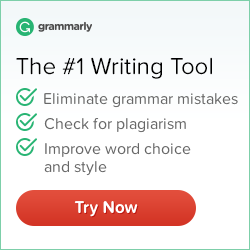 Uncover the benefits of producing content aimed at your potential customers rather than search engines. Doing so will enable you to connect more effectively with your audience and increase the likelihood of conversions.
Uncover the benefits of producing content aimed at your potential customers rather than search engines. Doing so will enable you to connect more effectively with your audience and increase the likelihood of conversions.
Focusing solely on search engine optimization (SEO) may result in keyword-stuffed content that is challenging to read and needs more value for the reader.
Therefore, it’s crucial to remember that your audience’s needs come first when creating content. Doing this will establish trust and credibility with your customers, leading to long-term brand loyalty and success.
When it comes to your website, there is one group of people that you should always keep in mind: your potential customers. Not search engines. Why?
Because potential customers are the ones who will be giving you business, not search engines, writing for potential customers has several benefits.
First of all, it helps you to connect with your audience. When you write for potential customers, you can speak directly to them and address their specific needs.
 Here are some tips on how to write with a human voice if you struggle to connect with your audience through your writing:
Here are some tips on how to write with a human voice if you struggle to connect with your audience through your writing:
- Know your audience. What are they interested in? What do they need to know? What kind of language do they speak? Once you know your audience, you can tailor your writing to appeal to them.
- Be yourself. People can spot a fake a mile away, so be yourself in your writing. Let your personality shine through, and people will be more likely to connect with you.
- Use humor. People love to laugh, so using humor in your writing can be a great way to engage your audience. Just make sure the spirit is appropriate for your audience and that it doesn’t detract from the message of your writing.
- Be conversational. Write in a way that you would speak to a friend. Use contractions, informal language, and personal pronouns.
 Tell stories. People love stories. They’re a great way to engage your audience and make your writing more memorable. When you tell a story, make sure it’s relevant to your topic and that it has a clear beginning, middle, and end.
Tell stories. People love stories. They’re a great way to engage your audience and make your writing more memorable. When you tell a story, make sure it’s relevant to your topic and that it has a clear beginning, middle, and end.- Use visuals. People are more likely to remember information if they see it. That’s why visuals are such an important part of engaging writing. Use images, videos, and infographics to break up your text and make your writing more visually appealing.
- Ask questions. Asking questions is a great way to get your audience involved in your writing. It also helps you to gauge their understanding of the material. When you ask questions, make sure they’re open-ended and thought-provoking.
- Keep it short and sweet. People have short attention spans. That’s why keeping your writing brief and to the point is crucial; try to keep your posts under 500 words.
You can write with a human voice that will connect with your audience.
Structure Your Content for Maximum Engagement
 Any good blog post starts with a catchy title that piques your readers’ interest.
Any good blog post starts with a catchy title that piques your readers’ interest.
But once you’ve gotten their attention, how do you keep it?
By structuring your content for maximum engagement.
Like any good story, your blog post should have a beginning, middle, and end. The opening should introduce your topic and hook your readers in. The middle should be the meat of your post, where you explore your topic in depth.
Why You Should Use Keywords in Your Headlines
With so much competition on the internet, it’s essential to make sure your content stands out. One way to do this is by using keywords in your headlines.
This will help your content appear higher in search engine results, making it more likely that people will see and click on it. In addition, using keywords can help to communicate what your article is about more clearly and concisely. Use Semper Plugins LLC. for the best SEO insights.
Use Keywords to Help Your Readers Find Your Content
 As a writer, it’s important to consider your audience and what they might search for when they come across your content.
As a writer, it’s important to consider your audience and what they might search for when they come across your content.
By including keywords in your title and throughout your content, you can help readers find your piece more quickly.
However, remember that too many keywords will make your content seem spammy so strike a balance between being descriptive and keyword-rich.
Write from the heart:
 When it comes to writing, there is no one-size-fits-all approach. However, one thing that all great writers have in common is that they write from the heart.
When it comes to writing, there is no one-size-fits-all approach. However, one thing that all great writers have in common is that they write from the heart.
Writing with a human voice means connecting with your audience on a personal level, which can profoundly impact both the writer and the reader. There are many benefits to writing with a human voice.
Write with a human voice.
If you struggle to connect with your audience through your writing?
Finding the right balance between sounding professional and relatable can be tricky, but it is essential to engage your reader.
Luckily, you can use some simple tricks to write with a human voice.
By following these tips, you’ll be able to add personality to your writing and make a lasting impression on your readers.
In a world where technology is constantly evolving, it’s easy to forget the importance of writing like a natural person. Use short paragraphs and bullet points.
In writing, bullet points can be a great way to organize your thoughts and make your writing more concise. Here are the benefits of using bullet points in your essay:
 Make Your Paragraphs More Engaging
Make Your Paragraphs More Engaging
1. Use short paragraphs
2. Use bullet points
3. Use exciting adjectives and verbs
4. Use active voice
5. Use specific and concrete examples
 Are your paragraphs dull and unengaging? Here are five ways to fix that! Using short paragraphs, bullet points, exciting adjectives and verbs, active voice, and specific and concrete examples will make your sections much more engaging for your reader.
Are your paragraphs dull and unengaging? Here are five ways to fix that! Using short paragraphs, bullet points, exciting adjectives and verbs, active voice, and specific and concrete examples will make your sections much more engaging for your reader.
Here are some more details about each of these techniques:
- Short paragraphs: People have short attention spans, so it’s important to keep your paragraphs short and to the point. A good rule of thumb is to keep your paragraphs to 5-7 sentences long.
- Bullet points: Bullet points are a great way to break up your text and make it easier to scan. They’re also a great way to list items or steps.
- Exciting adjectives and verbs: Exciting adjectives and verbs can make your writing more interesting and engaging. Instead of using boring adjectives like “big” or “small,” try using more exciting adjectives like “enormous” or “miniature.” And instead of using weak verbs like “is” or “was,” try using stronger verbs like “explodes” or “withers.”
- Active voice: Active voice is more engaging than passive voice. In active voice, the subject of the sentence performs the action. For example, “The dog chased the cat” is in an active voice. In passive voice, the subject of the sentence receives the action. For example, “The cat was chased by the dog” is in passive voice.
- Specific and concrete examples: Specific and concrete examples can help your readers understand your points more clearly. For example, instead of saying, “The dog was big,” you could say, “The dog was the size of a small horse.”
The Benefits of Short Paragraphs and Bullet Points
 Short paragraphs and bullet points are two of the most effective ways to make your content more engaging and easier to read. Here are some of the benefits of using short paragraphs and bullet points:
Short paragraphs and bullet points are two of the most effective ways to make your content more engaging and easier to read. Here are some of the benefits of using short paragraphs and bullet points:
- They make your content more scannable. In today’s world, people are bombarded with information from all sides. They don’t have time to read long, dense paragraphs. Short paragraphs and bullet points make it easy for people to scan your content and find the information they’re looking for.
- They make your content more readable. Long paragraphs can be difficult to read and understand. Short paragraphs are easier to follow and make your content more accessible to a wider audience.
- They make your content more persuasive. When you present your information in a clear and concise way, it’s more likely to be persuasive. Short paragraphs and bullet points help you to do just that.
- They make your content more memorable. People are more likely to remember information that is presented in a short, easy-to-read format. Short paragraphs and bullet points help you to make your content more memorable.
Use short paragraphs and bullet points to make your content more engaging, readable, persuasive, and memorable.
Here are some additional tips for using short paragraphs and bullet points effectively:
- Keep your paragraphs to 5-7 sentences long.
- Use bullet points to list items or steps.
- Use clear and concise language.
- Use active voice instead of passive voice.
- Use strong verbs instead of weak verbs.
- Use transition words to help your readers follow your train of thought.
Short paragraphs and bullet points can create more engaging, readable, persuasive, and memorable content.
Clear Structure in Your Content
 A clear structure in your content can improve the quality of your writing and make it easier for your readers to follow your ideas.
A clear structure in your content can improve the quality of your writing and make it easier for your readers to follow your ideas.
We’ll explore the benefits of using a clear structure in your content and how you can use it to your advantage.
A clear structure in your content has many benefits, including:
- It makes your content easier to read and understand. Readers can easily follow your train of thought when your content is well-structured. This is especially important for long pieces of content, such as articles or blog posts.
- It helps readers to remember your content. When your content is well-structured, it is easier for readers to remember the key points. This is because the structure helps to create a logical flow of information.
- It makes your content more persuasive. When your content is well-structured, it is easier to persuade readers to agree with your point of view. This is because the structure helps to build a strong case for your argument.
- It makes your content more SEO-friendly. Search engines like Google rank content that is well-structured higher in their search results. This is because well-structured content is easier for users to read and understand.
 Here are some tips for creating a clear structure in your content:
Here are some tips for creating a clear structure in your content:
- Start with a strong introduction. Your introduction should grab the reader’s attention and give them a reason to keep reading.
- Use headings and subheadings. Headings and subheadings help to break up your content and make it easier to scan.
- Use transition words. Transition words help to connect your ideas and make your content flow smoothly.
- End with a strong conclusion. Your conclusion should summarize your main points and give the reader something to consider.
These tips will help you create content that is well-organized and simple to comprehend.
 When it comes to content, having a clear structure is critical.
When it comes to content, having a clear structure is critical.
By outlining your scope before you write it, you can ensure that your finished product is organized and easy to follow.
Not only will this make it simpler for your readers to digest, but it will also make the writing process quicker and less daunting.
Trust us – your future self will thank you for taking the time to map things out ahead!
There are five essential methods that you must implement to boost the engagement of your content.
– It is imperative that you maintain the meaning of the text.
– There should be no addition of new information, sentences, or paragraphs.
– Under no circumstances should you remove any crucial information from the text.
– The rewrite must adhere to the same level of formality used in the original text.
 One of the most important aspects of content marketing is engagement. Without engagement, your content will never reach its full potential. There are many ways you can make your content more engaging.
One of the most important aspects of content marketing is engagement. Without engagement, your content will never reach its full potential. There are many ways you can make your content more engaging.
Here are ways to make your content more engaging:
- Know your audience. The first step to creating engaging content is to know your audience. Who are you writing for? What are their interests? What do they want to learn? Once you know your audience, you can tailor your content to their needs and interests.
- Write in a clear and concise style. People are busy and have short attention spans. Make sure your content is easy to read and understand. Use short sentences and paragraphs, and break up your text with headings, subheadings, and images.
- Use visuals. Images and videos can help to break up your text and make your content more visually appealing. They can also help to explain complex concepts or ideas in a more straightforward way.
- Tell stories. People love stories. They’re a great way to engage your audience and keep them interested in what you have to say. When you tell a story, make sure it’s relevant to your topic and that it has a clear beginning, middle, and end.
- Ask questions. Asking questions is a great way to get your audience involved and engaged with your content. It also helps to start a conversation and get people thinking about what you’ve written.
Here are some additional tips for creating engaging content:
- Be original. Don’t just rehash the same old information that everyone else is sharing. Come up with new ideas and perspectives that will make your content stand out.
- Be timely. Share content that is relevant to the current news cycle or trends. This will help to ensure that your content is seen by more people.
- Be social. Share your content on social media and encourage others to share it as well. This will help to reach a wider audience and get people talking about your content.
By following these tips, you can create content that is more engaging and interesting for your audience.
Conclusion,
Google is more than ever focusing on user experience. Your SEO strategy has to adapt and give the user what he wants. It will help you create better content and optimize it for search engines.
Thanks,
Kevin
Are you looking to boost your online business? Explore the Wealthy Affiliate Platform and discover expert guidance on creating a lucrative business from the comfort of your home. Our platform provides top-notch training, tools, and resources to help you succeed. Don’t hesitate. Start exploring today!

